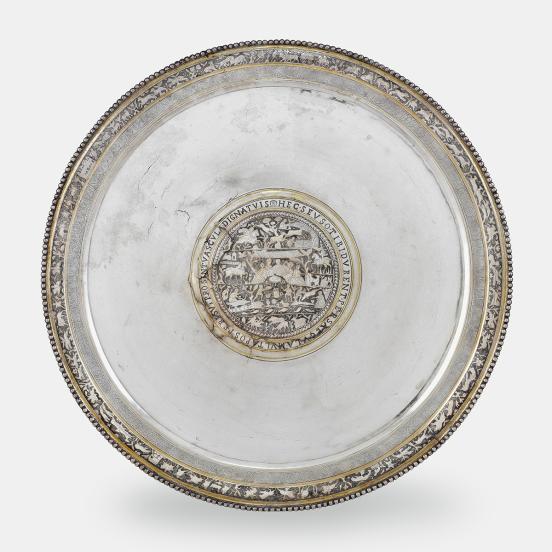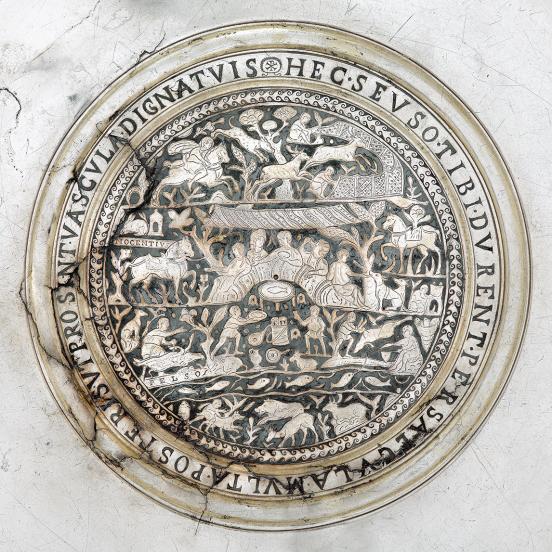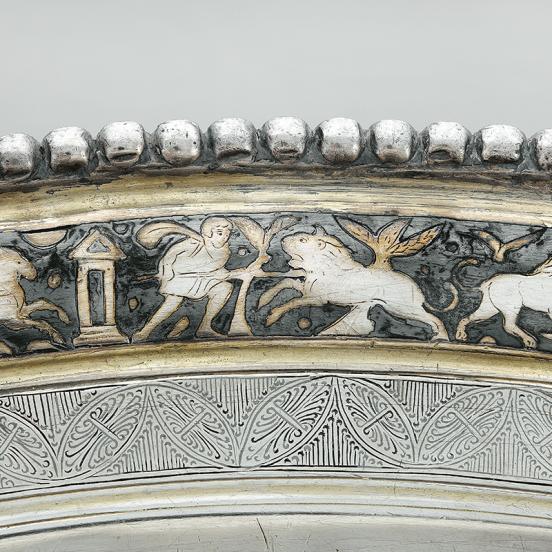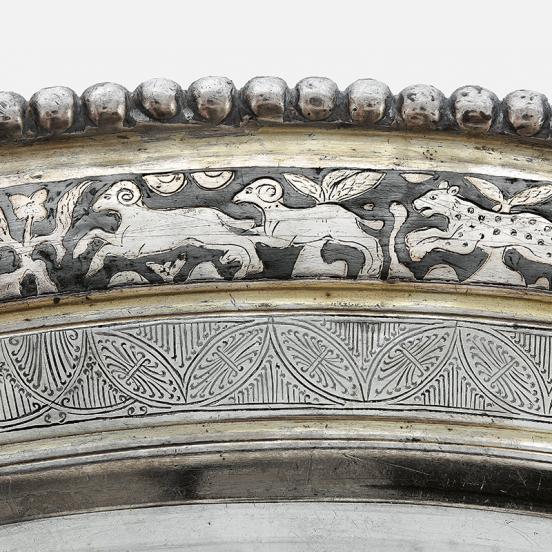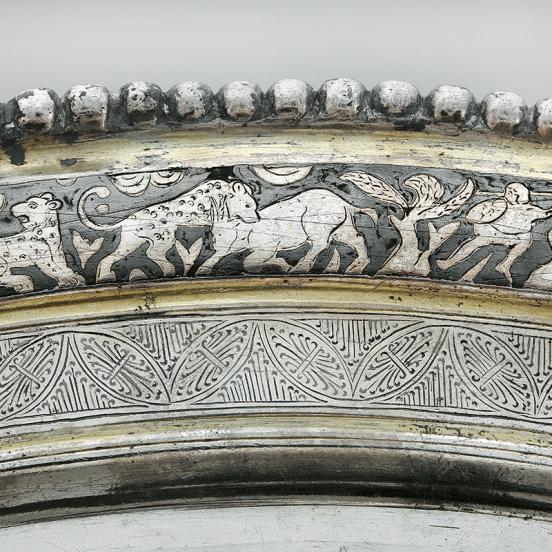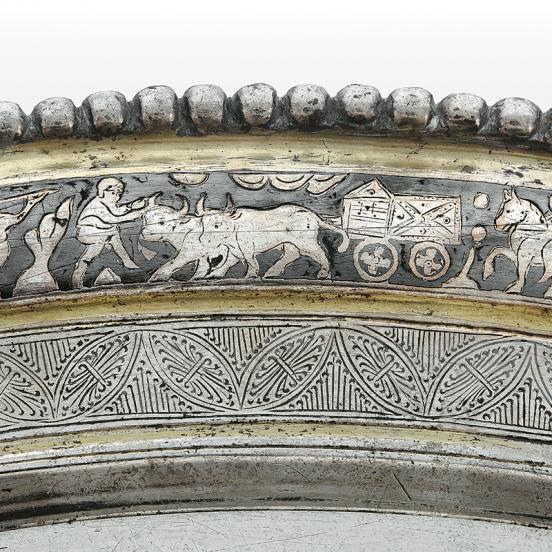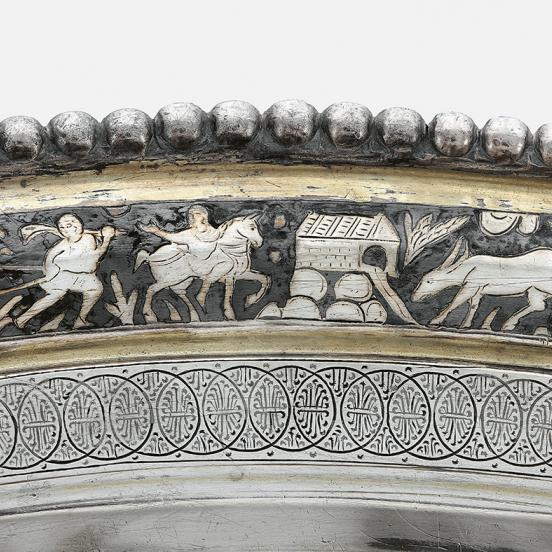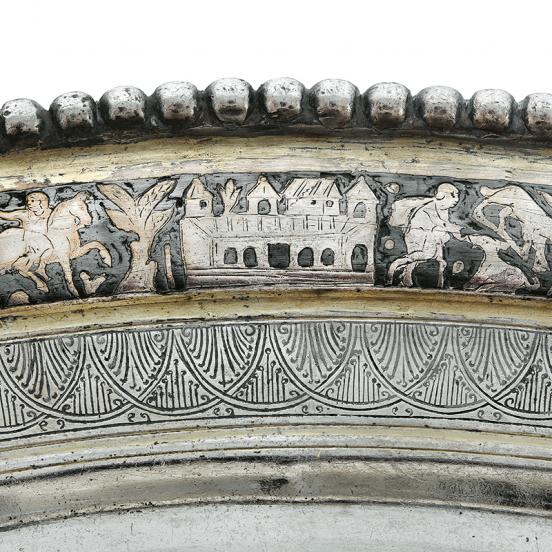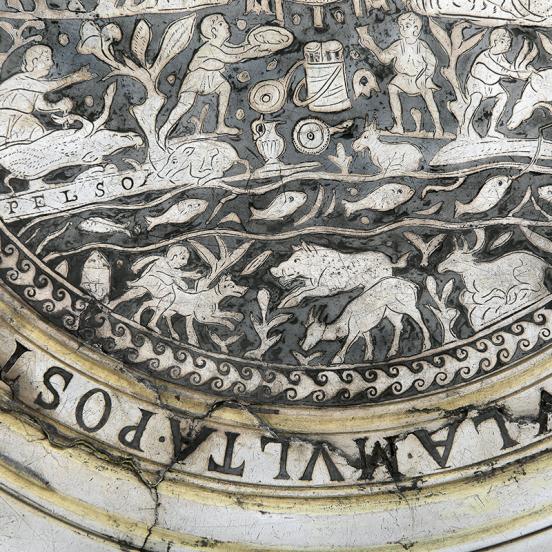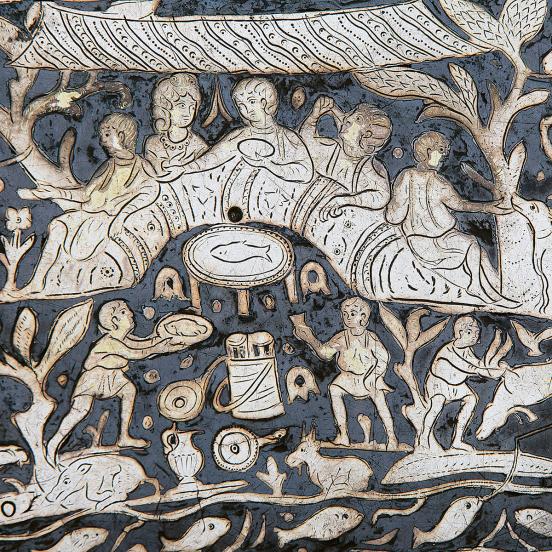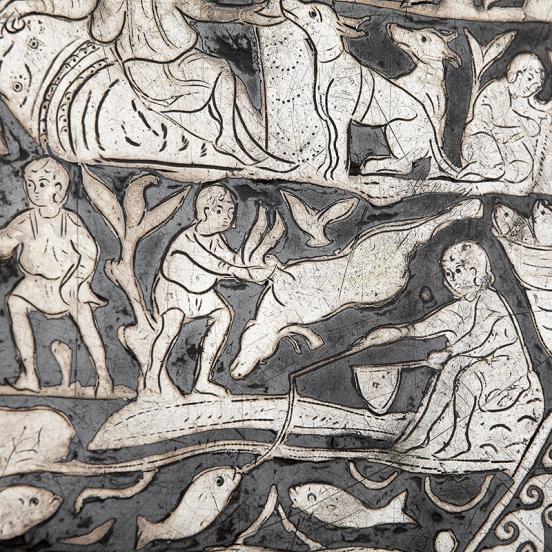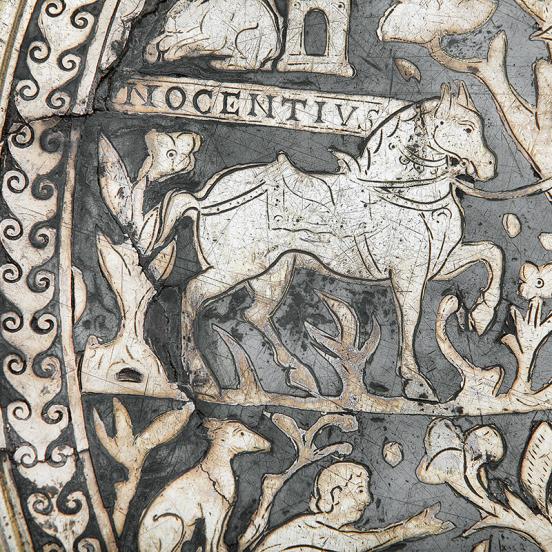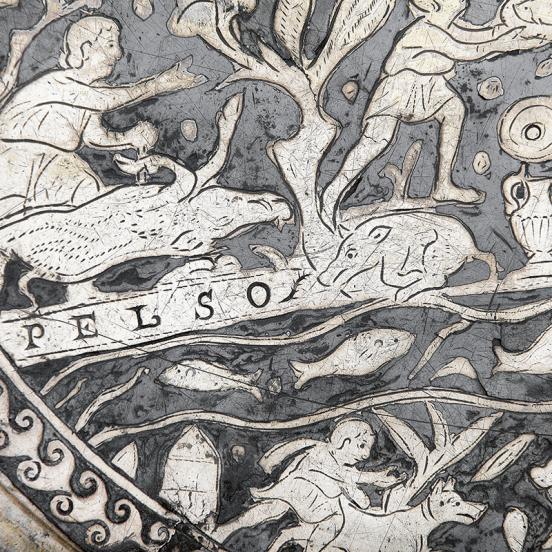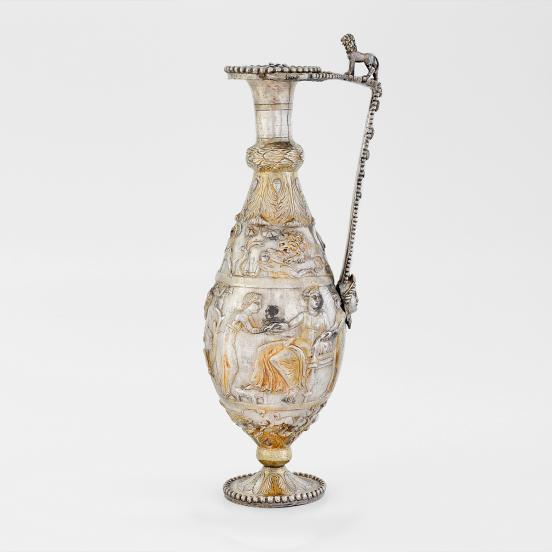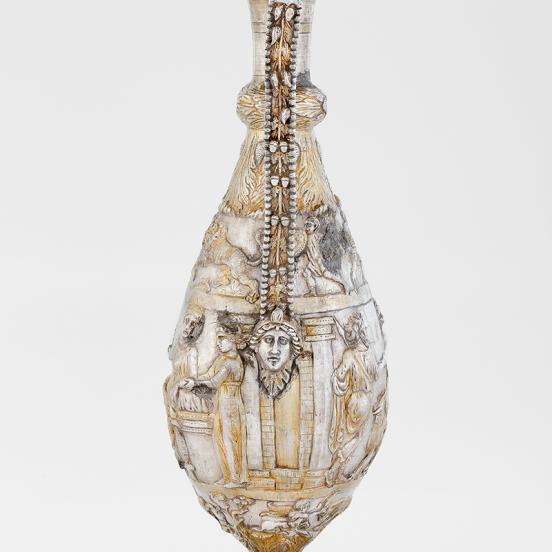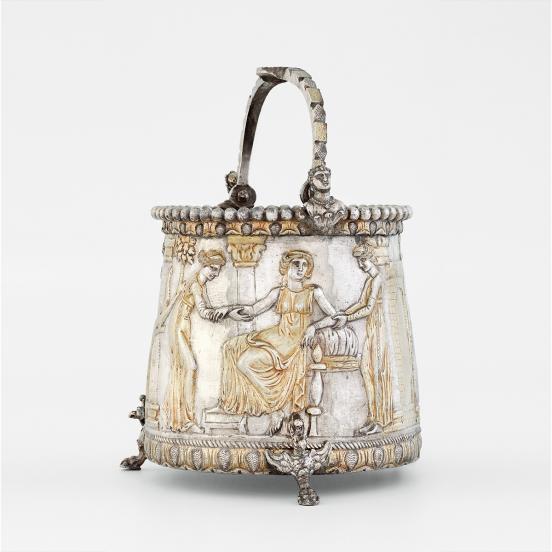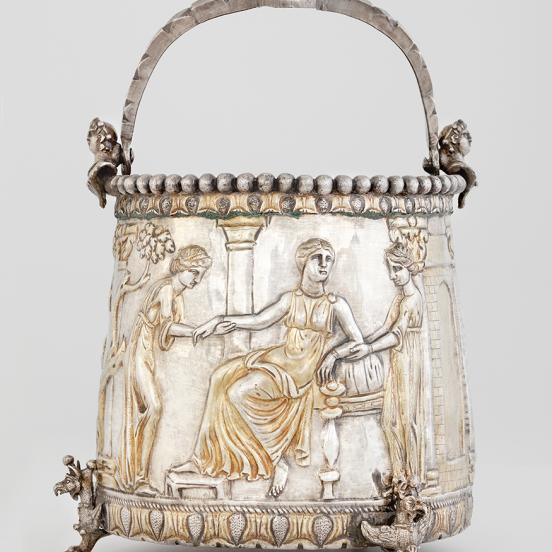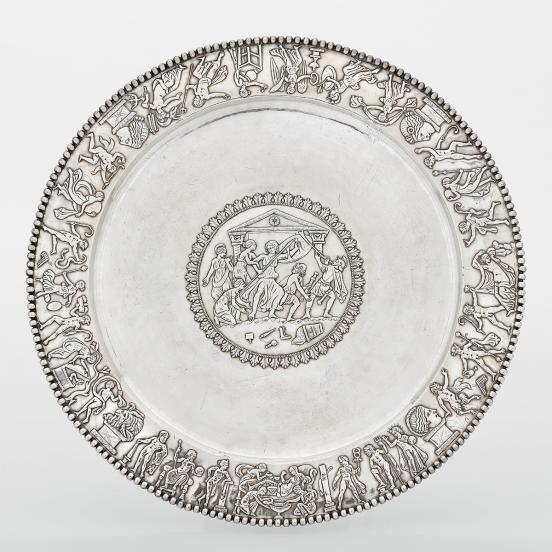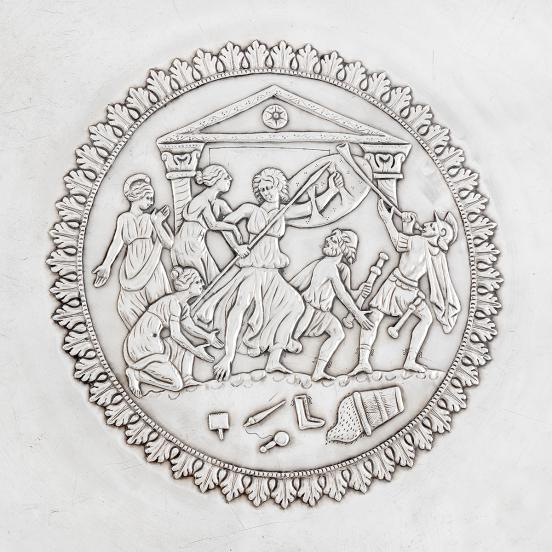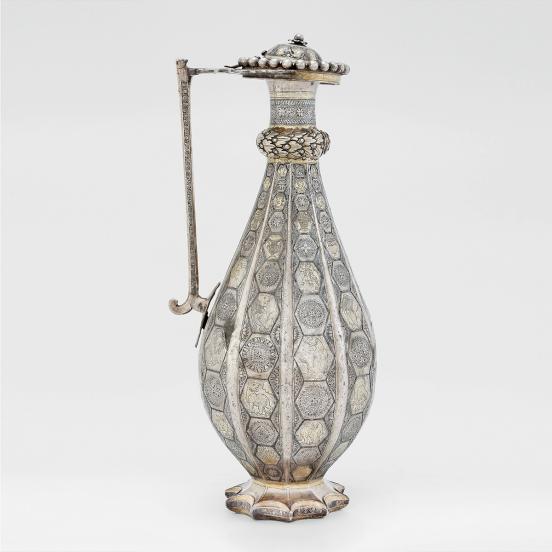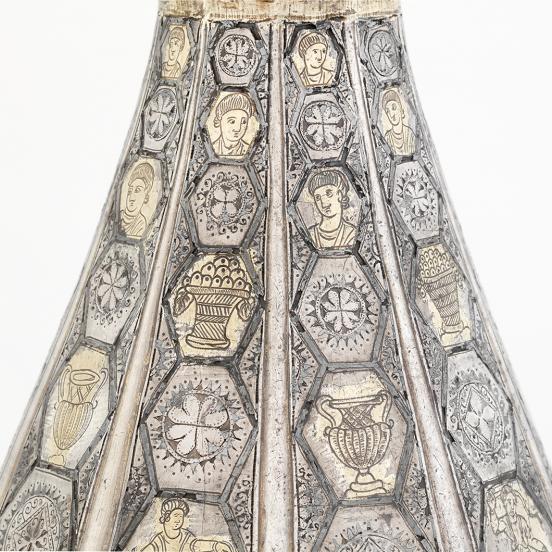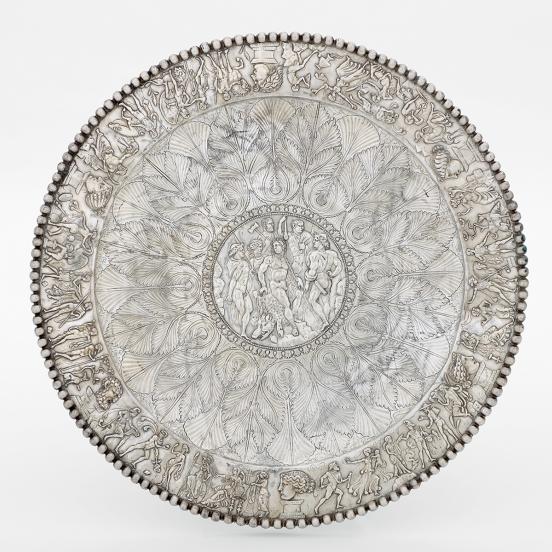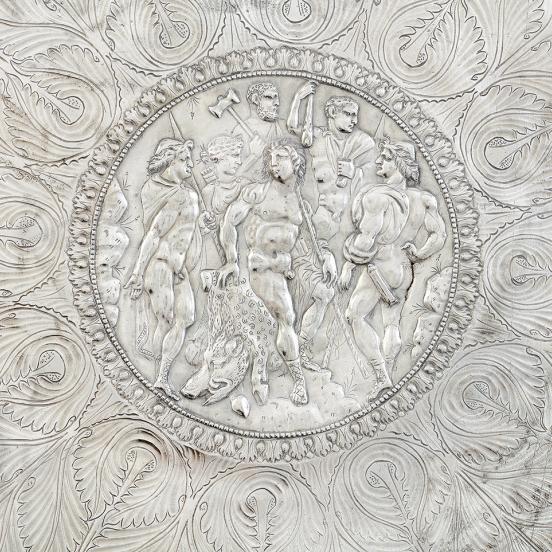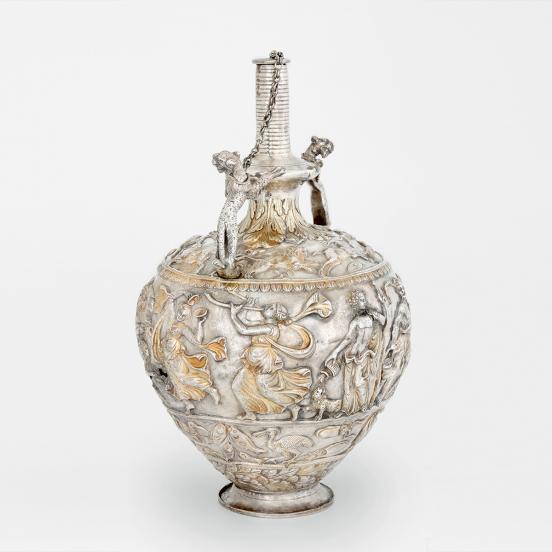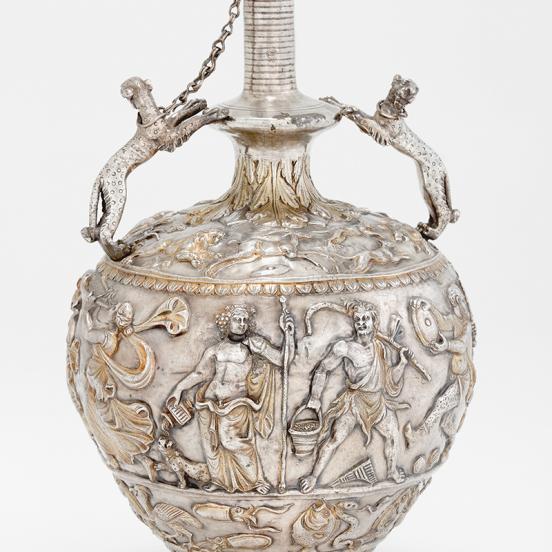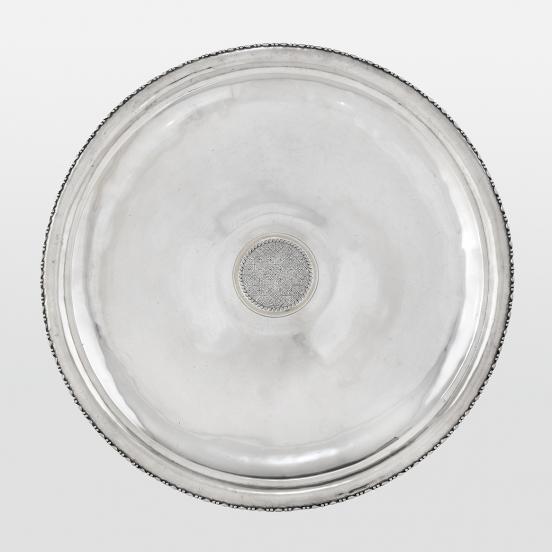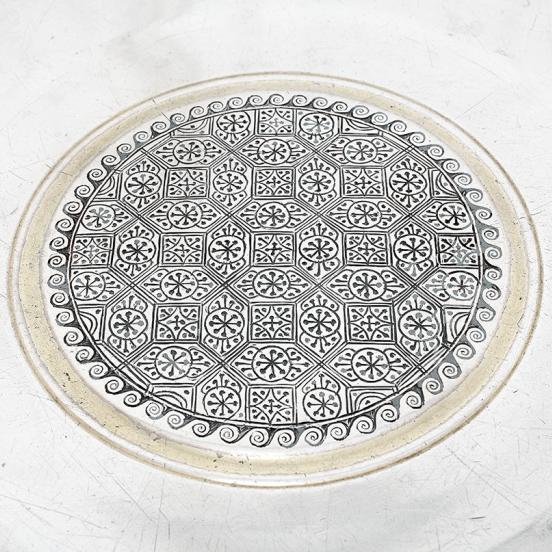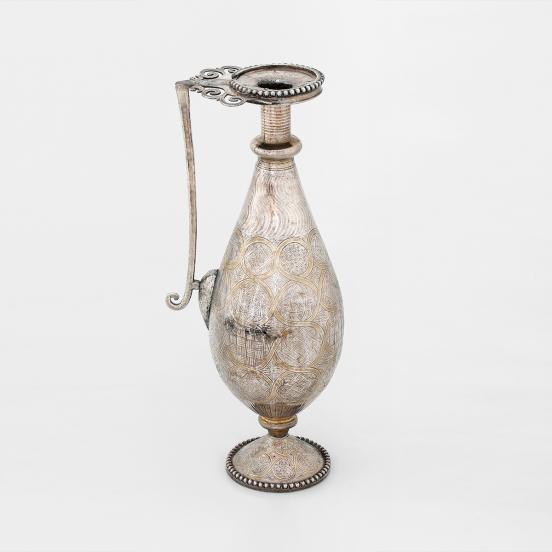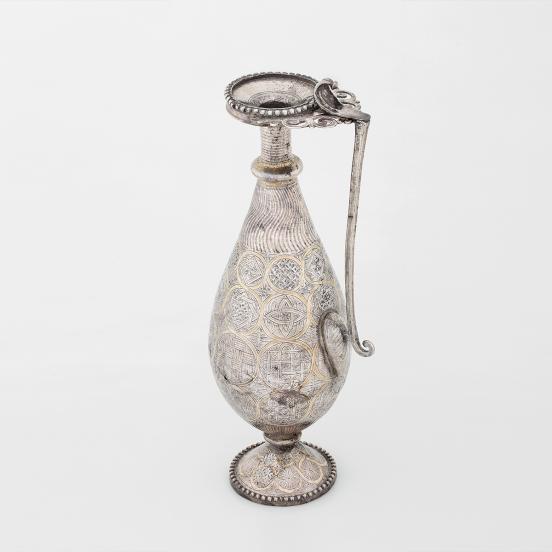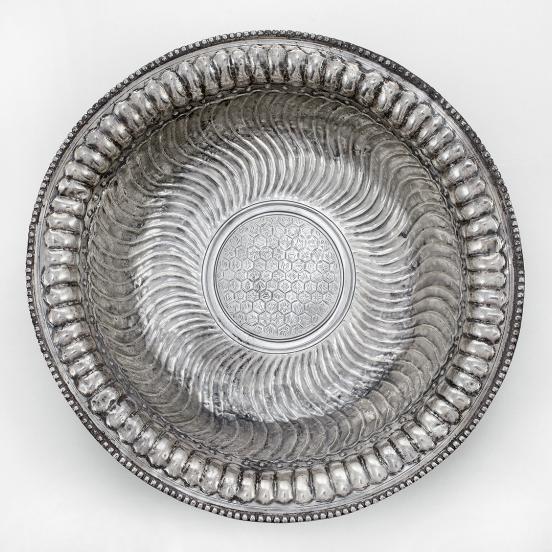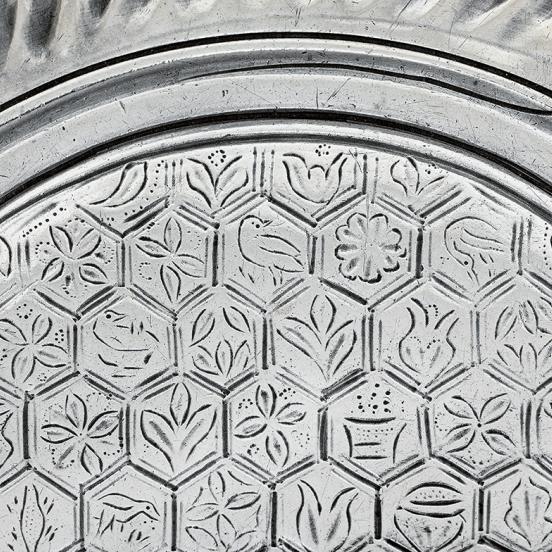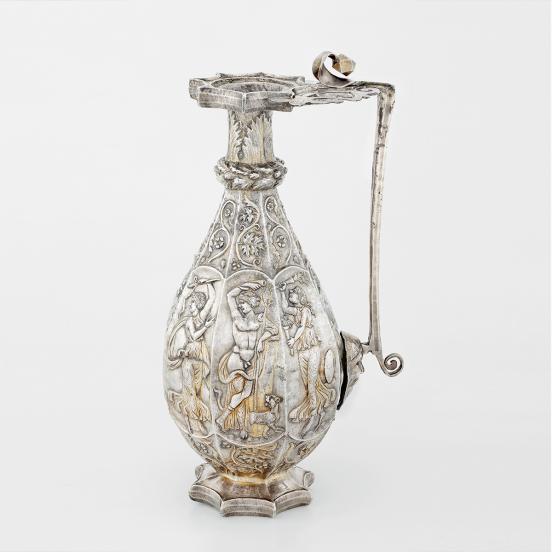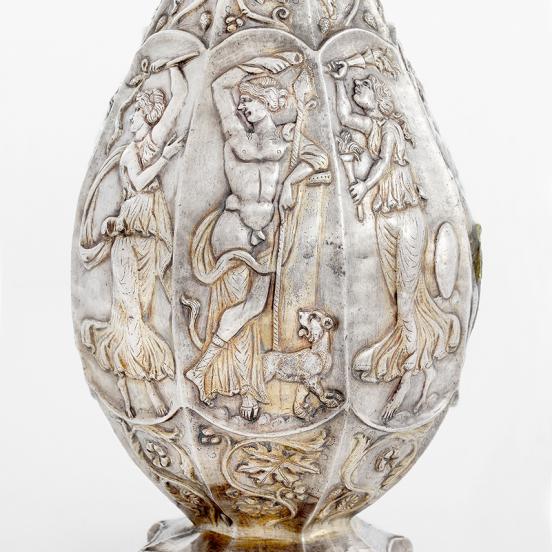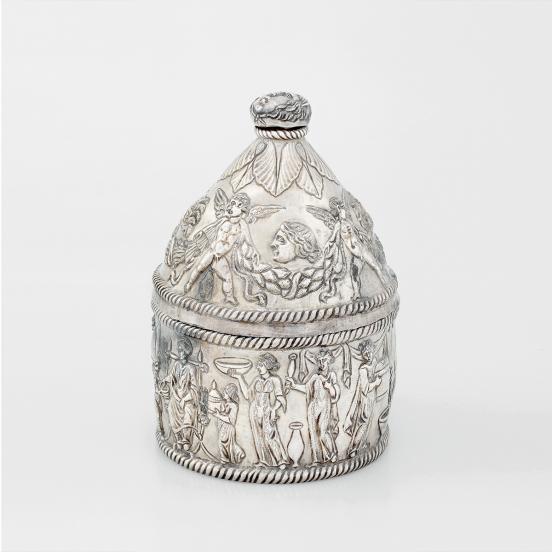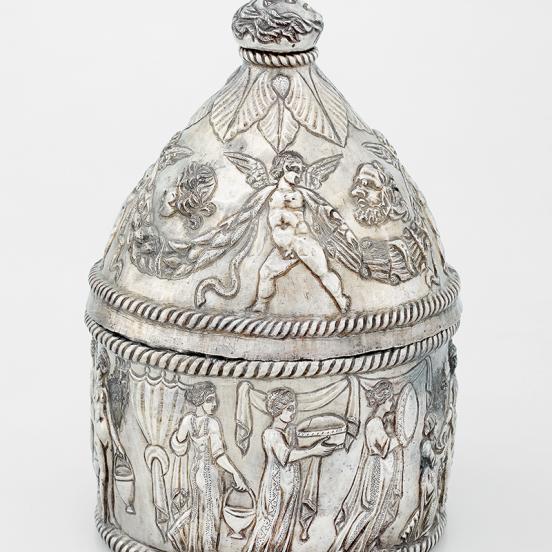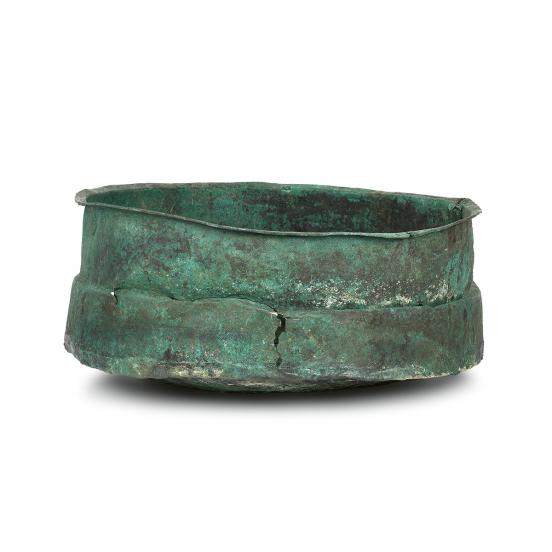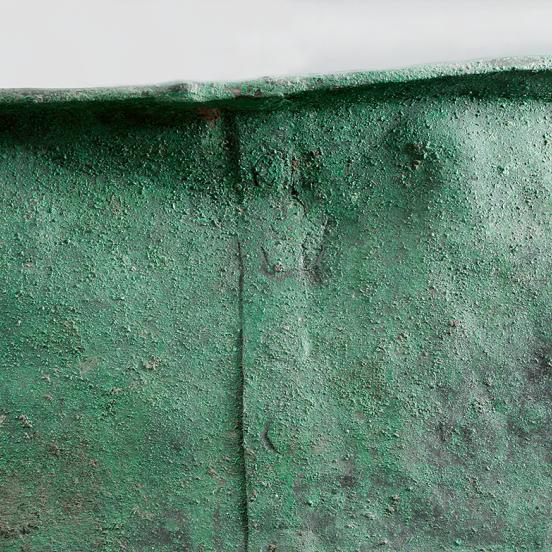The Seuso Platter
This is the eponymous piece of the treasure and is exceptional due to its decoration and the depicted life scenes. Different episodes of a hunt can be seen in a game park including exotic animals (antelopes, leopards, onagers, lions and gazelles) on the edge of the platter. The hunters loaded with prey are returning to the lord’s country residence. The central medallion is framed with an inscription in verse composed specially for the owner and commissioned by the patron of the platter. A family event, perhaps a wedding provided the occasion for presenting the gift. The beginning and end of the inscription are marked by the linked Greek letters of chi and rho framed in a wreath. They are the initials of Christ, but could also be interpreted as a sign of victory. Genre pictures characteristic of the life of landowners are depicted in the medallion. Composed around the centre of the platter, a banqueting group of people is seen reclining on a semi-circular couch cushion. The central figures are probably Seuso and his wife, surrounded by three male guests or family members. There is fish on the table before them. Two servants are offering food and drink, others are butchering the animals killed during the hunt. A canvas providing shade is suspended above the group of hunters between two trees. The banquet takes place on the bank of water rich in fish, which is connected to an inscription of Pelso, the Latin name of Lake Balaton. Seuso’s favourite hunting horse, In(n)ocentius, is also named on the platter. The animal probably received the name—meaning innocent—for being gentle or, on the contrary, for being boisterous. The same name was given to a blood-thirsty bear trained to kill, which was owned by Emperor Valentinian I (364–375).
The engraved outlines render a graphic effect to the figurative scenes highlighted by gilding from the niello (silver sulphide) inlaid, matt black background.
Diameter: 70.5 cm
Height: 3 cm
Weight: 8.873 kilograms
Material: silver of 96–97% purity

